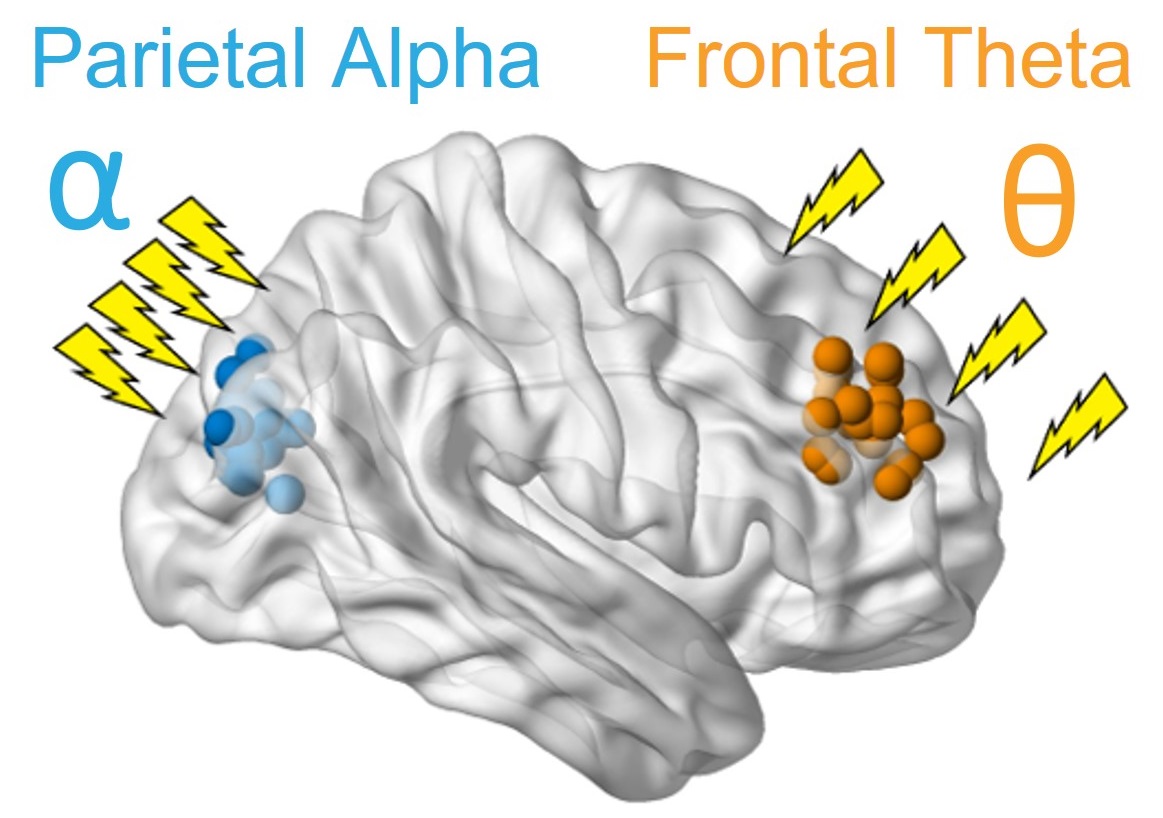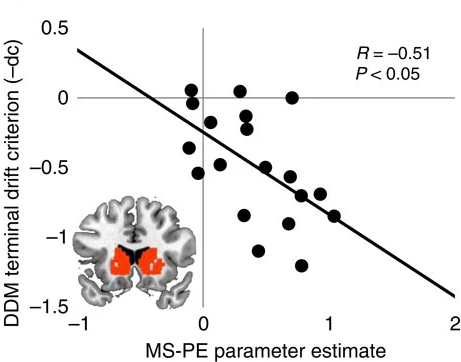Projects
A sample of specific research questions and recent projects:
Are frontal and parietal cortex necessary for working memory function?
Although frontal and parietal cortex have been widely implicated in working memory (WM) by neuroimaging and neurophysiology, patients with frontal or parietal lesions often present clinically with spared WM function. How can we reconcile these seemingly conflicting findings? Are frontal and parietal cortex necessary for WM function? To address these questions, we conducted a large-scale multi-modal Registered Report. This project combines fMRI, off-line disruptive TMS, and computational models to dissociate the essential roles of frontal and parietal cortex in canonical WM tasks. This approach was specifically designed to reconcile conflicting results from the extant literature and to overcome the inferential challenges inherent to correlational methods like neuroimaging and neurophysiology. To achieve this, I first scanned 120 subjects to functionally localize targets considered critical WM nodes: lateral PFC, superior intraparietal sulcus (IPS), and inferior IPS. We then used off-line TMS to disrupt each target site and assessed the effects on performance in several WM tasks. TMS spared conventional measures of WM capacity and task performance, which sharply challenges the idea that frontal-parietal regions serve as the primary storage site for WM and are necessary for basic WM performance. Instead, TMS to PFC and superior IPS (but not inferior IPS) selectively impaired model-based metrics of attentional control over WM. By revealing specific control demands that require intact PFC and IPS function, these findings provide a useful framework for integrating a large corpus of past results. Moreover, this work highlights the value of causal methods to advance theoretical debates and reinforces the evergreen adage that correlation does not imply causation.

How do frontal and parietal oscillations contribute to the cognitive control of WM?
Whereas disruptive off-line TMS can produce “virtual lesions” to test the causal necessity of cortical regions, rhythmic TMS can uncover how these regions implement control functions. This is a novel method that applies online TMS at different frequencies to test whether specific neural oscillations play a causal role in cognition. We used fMRI and rhythmic TMS to investigate how frontal and parietal oscillations contribute to the control of WM [Current Biology]. Substantial correlational evidence has associated frontal theta (5 Hz) and parietal alpha (10 Hz) oscillations with visual attention and WM. We applied TMS at these frequencies during specific task demands (prioritizing or suppressing WM content) and found that TMS improved performance only when the stimulation frequency matched the task-driven oscillations of the targeted region. This approach provides causal evidence for local neural dynamics that is not possible with off-line TMS or classic neuropsychology methods like lesion studies. Collectively, this line of work reveals when frontal and parietal cortex are necessary (or not) for WM performance, and causally establishes dissociable contributions for frontal theta and parietal alpha oscillations in the cognitive control of WM.

How does the striatum contribute to mnemonic control of declarative memory?
Because the striatum plays a key role in decision making and reinforcement learning (RL), I hypothesized that frontal-striatal circuits might use RL principles to adaptively adjust control processes that monitor memory retrieval. RL theory has been extensively developed to account for behavioral, computational, and neural data in the context of decision making and implicit learning, and thus provides a set of established principles for me to extend to declarative memory. In a series of follow-up experiments, we found converging evidence from behavioral manipulations, model-based fMRI, and Drift Diffusion Models that implicated striatum and RL processes in mnemonic control of declarative memory retrieval [Nature Communications]. In related work, we have also characterized several distinct control strategies that monitor memory retrieval and that recruit dissociable prefrontal regions. Together, these findings provide an integrative perspective of multiple memory systems: successful control of declarative memory can be considered a skill that is learned and updated through the nondeclarative memory system.

